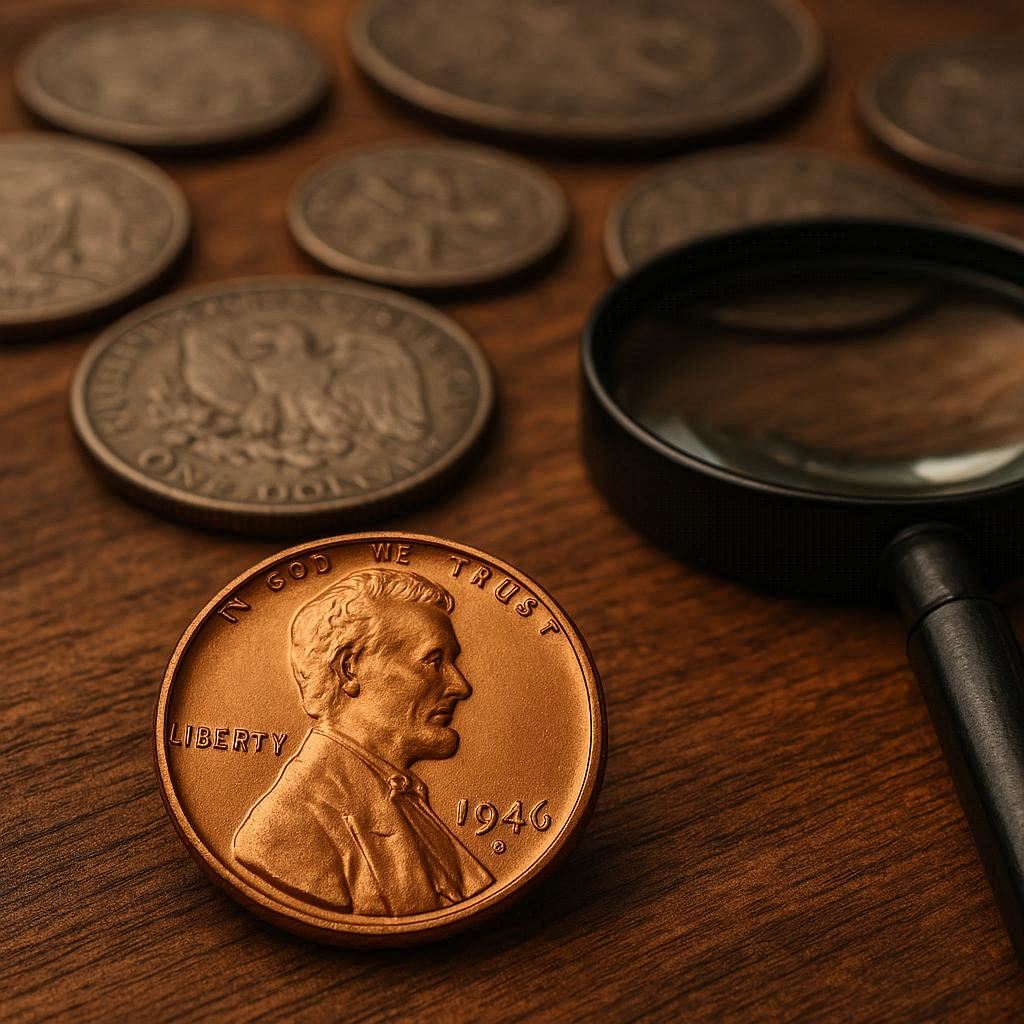
Introduction
Lincoln wheat penny value is a topic that excites both casual finders and serious numismatists alike. Whether you unearthed a wheat‑back cent in your pocket change or inherited a coin collection, this article will walk you through how much those little coins might be worth. You’ll learn what drives value, how to identify key dates and error pennies, grading and authentication tips, real‑world examples, and how to decide whether to sell or hold.
What Determines Lincoln Wheat Penny Value
Before jumping into specific values, it helps to understand the factors that influence Lincoln wheat penny value. These are:
-
Date & mint mark: Some years and mints had low production or high attrition.
-
Grade / condition: Mint State or high‑grade coins command large premiums.
-
Rarity / survival rate: Even if many were minted, few survive in top condition.
-
Errors & varieties: Missing mint marks, doubled dies, wrong planchets, etc.
-
Market demand & trends: Collector interest shifts over time.
-
Authentication / certification: Graded by PCGS, NGC, etc., adds credibility.
These combine to create the wide value range seen in wheat cents.
Historical Context & Mintage
The Lincoln wheat penny series ran from 1909 through 1958. The obverse features President Abraham Lincoln, and the reverse has two stylized wheat ears (hence “wheat penny”). Many of these coins circulated heavily, and many were melted for copper during wars or scrapping periods.
Because some key dates and error versions are extremely rare, those examples fetch extraordinary prices compared to typical wheat pennies.
Value Ranges: Common vs Rare
For most wheat pennies, the Lincoln wheat penny value is modest.
| Condition / Common Date | Typical Value Estimate* |
|---|---|
| Heavily worn, common date | $0.05 to $0.50 |
| Better condition, common date | $1 to $5 |
| Uncirculated, common date | $5 to $20+ |
| Key dates, error coins, high grade | Hundreds to six figures (or more) |
* These are approximate values and can vary by dealer, auction, market condition, border region, etc.
Key Dates & Very Valuable Wheat Pennies
Not every wheat penny is valuable, but certain dates and error types stand out. Knowing these can help you spot a “hidden gem.”
Top Key & Error Examples
-
1909‑S VDB
The 1909‑S (San Francisco mint) with designer’s initials “VDB” is a cornerstone of wheat penny collecting. In top condition, it can command high prices. -
1914‑D
Denver mint issue with limited mintage. High grade examples are quite scarce. -
1922 “No D”
A famous mint error: some 1922 pennies struck in Denver came out without a “D” mint mark. In higher grades, quite valuable. -
1931‑S
Low production and high demand make this a sought coin. 1955 Doubled Die
One of the most recognized error pennies: strong doubling in the date and lettering. -
1943 Bronze / Copper Penny
During WWII, pennies were struck in steel due to copper shortage. A few leftover bronze blanks were mistakenly used, creating extremely rare coins. Such a coin in high grade can reach six-figure (or even million-dollar) prices. -
1944 Steel error
The opposite error: when copper was resumed, a few steel planchets were accidentally used. Very rare.
These are some of the most famous ones, but there are other variants and rarities too.
Example Values in 2025
Below are illustrative values for some dates, by condition. These are not guaranteed, but give context for what collectors might pay. (Values change over time; verify with current sources.)
| Date / Type | Condition | Estimated Value* |
|---|---|---|
| 1909 (Philadelphia, common) | Good | ~$4 |
| 1909‑S VDB | Fine / Very Fine | $100+ |
| 1914‑D (Denver) | MS‑66 Red | $281,750 |
| 1922 No D | MS‑64 | ~$74,750 |
| 1931‑S | MS‑66 | sold in tens of thousands in rare cases |
| 1955 Doubled Die | AU / MS | $1,000 to $40,000+ depending on grade |
| 1943 Bronze (Copper) | MS Gem Red | Could approach $100,000+ or more |
* These are sample numbers, not guarantees. Always confirm current market conditions and certification.
How to Assess Your Collection: A Step-by-Step Guide
If you have a jar or roll of wheat pennies and want to see if any are valuable, here’s a process:
-
Sort by date and mint mark
-
Use a magnifier or loupe to read small letters like “D” or “S.”
-
Keep aside any with unfamiliar features (missing mint mark, doubling, odd coloring).
-
-
Check for known error types / anomalies
-
Doubled dies (particularly on 1955)
-
Missing mint marks (e.g. 1922 no D)
-
Wrong planchets (like a 1943 copper)
-
Repunched mint marks
-
Off‑center strikes or misaligned strikes
-
-
Evaluate surface quality & wear
-
Look at wheat stalk detail, Lincoln’s features, rim sharpness.
-
The more original luster and minimal wear, the better.
-
-
Reference a recent price guide / auction results
-
Compare with coins of similar grade sold recently.
-
Use coin auction databases, price guides, dealer listings.
-
-
Consider grading and third‑party authentication
-
If you believe you have a rare / valuable coin, submit it to PCGS or NGC. A certified coin will sell more reliably.
-
The cost of grading can be offset by the value boost it provides.
-
-
Decide sell, hold, or share
-
Ultra‑rare coins might be better held long-term or sold at a major auction.
-
Common‑date coins may be best sold to dealers or through collector circles.
-
Always request multiple offers and check reputations.
-
Error Coins & Varieties That Boost Lincoln Wheat Penny Value
Error or variety wheat pennies often carry premiums. Some notable types:
-
Double die (especially 1955)
Strong doubling on date/lettering. A classic collectible. Off‑center strikes / misalignments
Part of the design is missing; value scales with degree of off‑center. (E.g. 10% off ≈ $20+, 50% off ≈ $200+) -
Brocken / clipped planchets
Partially missing metal, abnormal shape. Collectors may pay extra if visual or rare. -
Repunched mint marks
Letters (D or S) punched more than once; double narrow or overlaid mint marks. -
Struck on wrong planchet
The 1943 bronze example is the famous case, but other cases exist in small numbers.
These varieties can drive Lincoln wheat penny value far above “typical.”
Tips to Avoid Overpaying / Being Scammed
-
Check sold listings, not just asking prices.
-
Be wary of uncertified “super gem” coins—fakes & cleaned coins are common.
-
Use coin grading services like PCGS & NGC for authentication.
-
Review auction histories and know prevailing market values.
-
Ask for magnified photos if buying online.
-
Buy/sell through reputable dealers or auction houses.
Storage, Preservation & Long-Term Value
To preserve and possibly increase Lincoln wheat penny value, follow good storage habits:
-
Use inert coin holders (mylar flips, acid-free envelopes, coin slabs).
-
Avoid PVC, which can degrade over time.
-
Store coins in a dry, stable environment (low humidity, consistent temperature).
-
Handle by edges — avoid fingerprints, oils, scratches.
-
Avoid cleaning coins—you can severely reduce value.
-
Keep documentation (original packaging, provenance) if available.
Well-preserved coins fare much better in auctions and retain value over time.
Case Studies: Real High‑Value Sales
-
A rare 1943 bronze (copper) Lincoln wheat penny sold for over $500,000 in auction.
-
The 1909‑S VDB in gem condition has fetched over $500,000 in certain cases.
-
A 1914‑D in MS‑66 Red sold for $281,750 (as cited in guides) for a key high-grade example.
-
A 1922 no D in high grade has sold for tens of thousands.
-
Error 1955 doubled die examples in high grade routinely command four- to five-figure sums.
These demonstrate what’s possible at the extreme end—but most pennies you find will be modest in value.
Realistic Expectations
While the possibility of discovering a six‑figure penny is exciting, most wheat pennies are not high value. Many are worth just a few cents above face, unless they are key dates or in outstanding condition. Use realistic expectations:
-
Most circulated commons = < $1
-
Some better specimens = $5–$20
-
Key dates / errors in mid grade = $50 to thousands
-
Ultra rare error / gem = tens of thousands or more
If you find a promising coin, getting it verified and certified is crucial before making financial decisions.
How to Sell or Trade Your Valuable Lincoln Wheat Penny
If you’re convinced you have a coin worth money:
-
Get it graded and authenticated by PCGS, NGC, etc.
-
Obtain multiple appraisals / offers from reputable coin dealers or auction houses.
-
Sell via established coin auction houses (Heritage, Stack’s, etc.).
-
Sell via trusted numismatic dealer networks or coin conventions.
-
Use online marketplaces carefully—ensure buyer guarantees, escrow, photos, condition disclosures lincoln wheat penny value.
-
Always ask for references, track record, and seller reputation.
-
Retain provenance and certification documentation—they add credibility.
High-end coins often fetch their full potential only via auction, because competitive bidding drives the final prices lincoln wheat penny value.
Tips for Beginner Collectors
-
Start by sorting your pennies and noting dates / mint marks.
-
Learn a few key dates (1909‑S VDB, 1914‑D, 1922 no D, 1955 double die, 1943 bronze).
-
Use a decent loupe / magnifier.
-
Join coin clubs or online forums to learn from others.
-
Keep realistic expectations—don’t overpay.
-
Gradually build a collection rather than chasing rare anomalies from day one.
FAQs
Q1: What’s a typical Lincoln wheat penny value for a 1940 common date?
For common dates like 1940, most coins in circulated condition are worth only a few cents above face (e.g. 5¢ to 50¢). In uncirculated condition, perhaps a few dollars. Unless it’s a rare variety, the premium is modest lincoln wheat penny value.
Q2: How do I know if my Lincoln wheat penny is a 1943 bronze error (very valuable)?
The 1943 bronze error is rare. Check with a magnet — bronze is nonmagnetic, steel is magnetic. Also examine weight and texture. If unsure, send it to a grading/authentication service to confirm lincoln wheat penny value.
Q3: Does having the coin graded increase the Lincoln wheat penny value?
Yes. Certification by trusted services like PCGS or NGC adds trust and often significantly increases the sale price—especially for rare examples.
Q4: Are all Lincoln wheat pennies with “S” mintmark more valuable?
Not automatically. While “S” mintmark (San Francisco) often indicates a more collectible coin,lincoln wheat penny value still depends on date, condition, rarity, and demand. Many “S” coins are still modest in value.
Q5: Can cleaning my coin improve its Lincoln wheat penny value?
No — cleaning generally reduces value. Collector markets dislike scratches, alterations, or polished surfaces. It’s better to leave it as found lincoln wheat penny value.
Q6: What’s the best way to store wheat pennies to preserve their value?
Use inert holders (acid-free flips, coin slabs), avoid PVC plastics, store in dry, stable environments, and handle by edges to prevent oils/smudges. Proper care preserves and protects lincoln wheat penny value.
Q7: Is it realistic to expect a million-dollar Lincoln wheat penny in my change someday?
It’s extremely unlikely, though not impossible. The ultra‑rare ones like the 1943 bronze or exceptional 1909‑S VDB are among very few. Most pennies are low value, so treat surprises as bonuses—but don’t expect them regularly.
Conclusion & Call to Action
Understanding Lincoln wheat penny value involves knowing what makes a coin rare, how condition and error types matter, and being cautious with grading and selling. While most wheat pennies are modest in value, a few special ones command extraordinary sums lincoln wheat penny value.
If you have a jar of wheat pennies, sort by date and mint mark, keep an eye out for error types like doubled dies or missing mintmarks, and consider having any that look rare professionally graded. If you believe you’ve found a treasure, I can help you evaluate it further or guide you to trustworthy grading services or auctions. Let me know your coin’s date, mint mark, and condition — and I’ll help estimate whether it’s a gem or a common piece.



